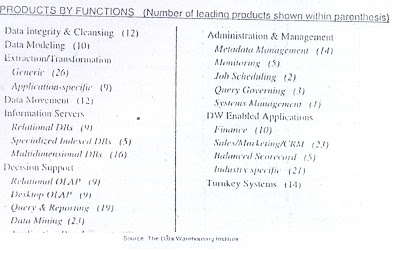Advanced Visualization Techniques: The most remarkable advance in visualization techniques is the transition from static charts in dynamic interactive presentations.
Chart Manipulation: A user can rotate it chart or dynamically change the chart type to get a clearer view of the results. With complex visualization types such as constellation and scatter plots, a user c.iin select data points with a mouse and then move the points around to clarify the view.
Drill Down: The visualization first presents the results at the summary level. The user can then drill down the visualization in display further visualizations at subsequent level of details.
Advanced Interaction: These techniques provide a minimally invasive user interface. The user simply double clicks a part the visualization and then drags and drops representations of data entiticts. Or the user simply right clicks and chooses options from a menu. Visual query is the most advanced of user interaction features. For example the may see the outlying data points in a scatter plot, then select a few or them with the mouse and ask for a brand new visualization id -just those selected points. The data visualization software generates the appropriate query from the selection; submits the query to the database and then displays the results in another representation.
Chart Manipulation: A user can rotate it chart or dynamically change the chart type to get a clearer view of the results. With complex visualization types such as constellation and scatter plots, a user c.iin select data points with a mouse and then move the points around to clarify the view.
Drill Down: The visualization first presents the results at the summary level. The user can then drill down the visualization in display further visualizations at subsequent level of details.
Advanced Interaction: These techniques provide a minimally invasive user interface. The user simply double clicks a part the visualization and then drags and drops representations of data entiticts. Or the user simply right clicks and chooses options from a menu. Visual query is the most advanced of user interaction features. For example the may see the outlying data points in a scatter plot, then select a few or them with the mouse and ask for a brand new visualization id -just those selected points. The data visualization software generates the appropriate query from the selection; submits the query to the database and then displays the results in another representation.


